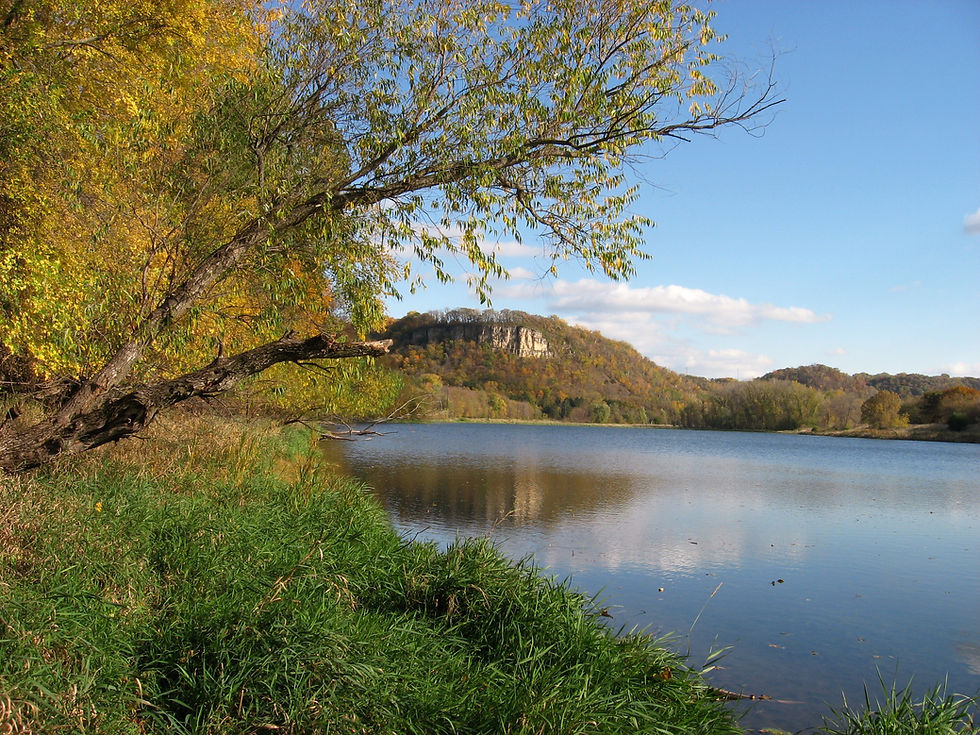A COVID-19 Spring
- wacoutanaturenotes
- May 6, 2020
- 3 min read

Brown Thrasher
With all the many challenges we are currently facing with the pandemic, there will no doubt be many positive changes to our way of life as we move forward. Maybe our frantic pace of life that we are used to will slow down and give us the opportunity to actually observe and appreciate our immediate environments and neighborhoods.
Kathy and I have always recognized that we live in an area with an incredibly diverse bird life. However until Governor Walz issued the "stay at home" order, we didn't fully realize the extent of that diversity. All the photos in this post were taken in our yard or in very close proximity to it.
Since March 8th, we have observed 50 different species of birds in our yard or flying overhead. One such bird was the brown thrasher that arrived April 6th. This bird spends most of its time near the ground preferring dense cover to build a nest. The exception to that rule is when the male is establishing his territory by singing a series of various melodious phrases repeated two or three times from the top of the tallest tree in our yard. In this case a tall cottonwood.

American Toad
On April 1st, as Kathy was removing some leaves from her flower garden, she uncovered a dormant American toad. This toad is the most common species in Minnesota and requires wetlands or ponds to reproduce. Otherwise, they are strictly a land animal.
In winter, toads burrow beneath the ground and below the frost line. This toad evidently worked its way up as the frost went out, but was still in a torpid state.

Garter Snake
A couple days later, Kathy happened upon new surprise in another part of the yard; a garter snake. This is the most well known snake in Minnesota and has a varied diet of frogs, earthworms and insects.
This snake was named after the striped garters once used to hold up socks. Because it is often seen in lawns and gardens, it incorrectly is called a gardener snake.

White-Throated Sparrow
In the early morning of April 28th, we had a huge flock of white-throated and white crowned sparrows arrive at our feeding station. These birds with white throats are appropriately named, but also have white stripes on their heads and a yellow spot near the eye.
Birders recall their unique song as "old sam peabody, peabody, peabody" or "grand old Canada, Canada, Canada." On my May canoe trips to the BWCA, these calls have added a special memory to the experience.

Adult Green Heron
On April 24th as I was finishing my breakfast, I was surprised to observe a very unusual bird at the edge of our backyard pond- a green heron! Over the years, we have observed a few Great Blue Herons but never a green heron.
These short stocky birds typically stand motionless near the edge of the water as they hunt for fish and amphibians. They are a solitary nester unlike the blue heron that nest in rookeries.

Wacouta Prairie
On my morning walks along the Rattlesnake Bluff Trail, I have been anxiously waiting for the exciting transformation of last year's soybeans to a restored prairie. About a week ago, I noticed substantial areas turning green.
With assistance from Wacouta resident wildflower expert Diane Mueller, this new vegetation was identified as mouse-ear cress (Arabidopsis thaliana). This winter annual with a very short life cycle is frequently used as a cover crop in prairie restoration efforts. Interestingly because of its ease to propagate, it has been used on the International Space Station.

Large Flowered Bellwort
This spring ephemeral was in full bloom the 30th of April. (Uvularie greandiflora) is usually found on the north slopes of the bluffs along the river and feature hanging flowers containing 6 narrow petals. Bees feed on the nectar and collect pollen from these flowers. Deer are extremely fond of feeding upon this new tender growth.

Male Rose-Breasted Grosbeaks
On Friday morning May 1st, our seed feeder was paid a visit by three male rose-breasted grosbeaks. These special birds are found and breed in the deciduous forests across the northeastern United States. Over the years as I hike the local woodlands in search of spring mushrooms, I have had little success in locating their nests.
The large heart-shaped pattern on the grosbeaks breast has given this bird the nickname "bleeding Heart."

Jack In The Pulpit
Jack In The Pulpit also known as "wild turnip" is a perennial wildflower which grows from a corm (bulb). It grows best in moist woodlands and thickets. The flowers are irregular shaped in which the pulpit wraps around Jack.




Great post - such a wide variety. A real 'lift' in these trying times.
Oh, Bruce! Such wonderful discoveries, gorgeous photos and interesting comments full of education! Yes, this is indeed a time to slow down and observe a bit more, the world of wonder around us. Thanks for the reminder to do just that, instead of worrying about the virus. Stay well and watch for those spring mushrooms! Marty & Dud
Nice - like the little snake :-)